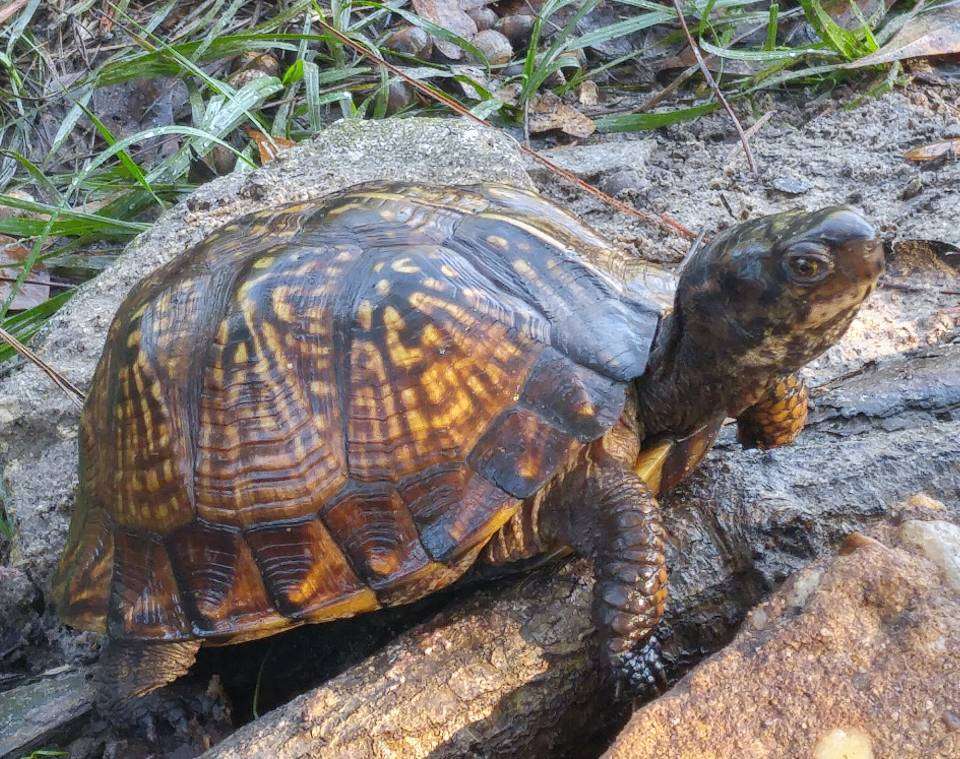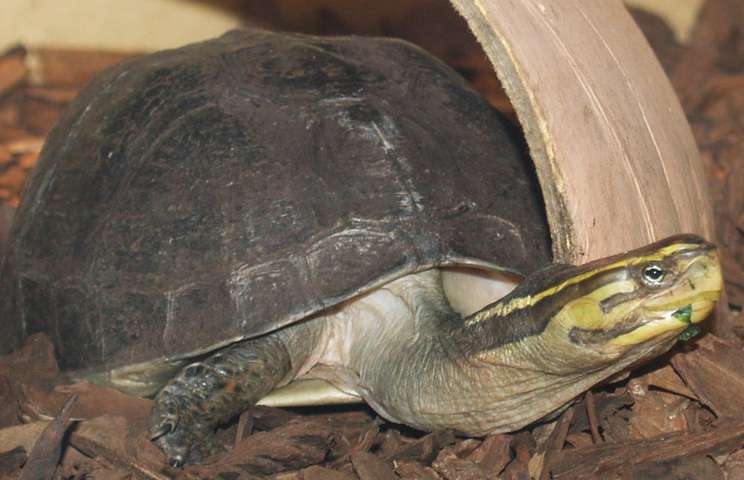
The biggest subspecies of the common box turtle, Gulf Coast box turtles are indigenous to regions bordering the Gulf of Mexico. They have a sizable, globular upper shell with yellow stripes or blotches that are often dark brown or black. Although they are not aquatic turtles, they adore being near water. They frequently inhabit marshes and swamps in the wild. Before getting one of these turtles as a pet, it is ideal to have some turtle experience because they have complex housing and nutrition requirements.
Care as a Pet

Heat
The best option for housing your Gulf Coast box turtle indoors is a terrarium with a heat light. With a basking place that is around 90 degrees Fahrenheit, they like temperatures between 80 and 85 degrees. Temperatures at night shouldn’t fall below 70 degrees. A heat rock should not be used as it can result in burns.
Housing
Although Gulf Coast box turtles (particularly hatchlings and juveniles) can be kept in sizable indoor terrariums with heaters, they do much better in outdoor cages with a comfortable climate. For a box turtle’s pen, the majority of experts advise a minimum size of 4 feet by 8 feet, especially if you have numerous turtles or it serves as their primary residence. If room is limited, a smaller pen will do, but stay above 4 feet by 4 feet. A turtle may become anxious in a small area. Though it should always have a shaded area, the enclosure should be situated in a sunny area.
Feed
Box turtles from the Gulf Coast are omnivores and require a diversified diet. As adults, they should consume around 40% of their calories from fruits, vegetables, and grasses, with the remaining 60% coming from sources of low-fat protein including earthworms, slugs, snails, mealworms, crickets, grasshoppers, and tiny fish. Consider your turtle’s age when making its food because hatchlings and young turtles are more carnivorous than adult turtles.
To avoid metabolic bone disease, it’s essential to make sure that your Gulf Coast box turtle consumes the proper amount of calcium and phosphorus in its diet. Dark leafy greens are a fantastic choice for vegetables. Examples include parsley, dandelion greens, spinach, and collard greens. Fruits to consider include blueberries, grapes, apples, and papaya.
Feed your turtle typically every two to three days. But depending on your turtle’s age, size, and health, talk to your veterinarian about the right amount and timing of meals. Additionally, you must always have a shallow pan of clean water that is conveniently accessible. Keep in mind that the turtle will use this to drink and soak, so replace the water frequently.
Table





